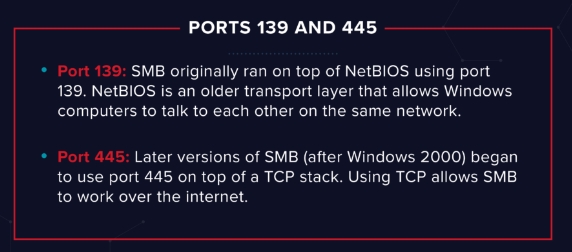Samba Shares
Samba is the standard Windows interoperability suite of programs for Linux and Unix. It allows end users to access and use files, printers and other commonly shared resources on a companies intranet or internet. Its often referred to as a network file system.
Samba is based on the common client/server protocol of Server Message Block (SMB). SMB is developed only for Windows, without Samba, other computer platforms would be isolated from Windows machines, even if they were part of the same network.
Using nmap we can enumerate a machine for SMB shares.
Nmap has the ability to run to automate a wide variety of networking tasks. There is a script to enumerate shares!
nmap -p 445 --script=smb-enum-shares.nse,smb-enum-users.nse 10.10.101.116
SMB has two ports, 445 and 139.

On most distributions of Linux smbclient is already installed. Lets inspect one of the shares.
smbclient //<ip>/anonymous
Using your machine, connect to the machines network share.

You can recursively download the SMB share too. If anonymous, submit the username and password as nothing.
smbget -R smb://<ip>/anonymous
Last updated
Was this helpful?